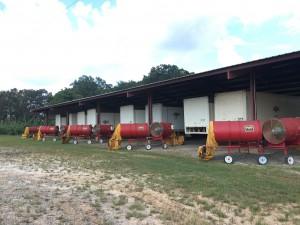 The thirty-second annual Georgia Peanut Tour will be held September 18-20, 2018, in Savannah, Georgia, and the surrounding area. The tour brings the latest information on peanuts while giving a first-hand view of industry infrastructure from production and handling to processing and utilization. Tour stops will be made in several peanut producing counties including Bulloch, Burke, Candler and Screven County.
The thirty-second annual Georgia Peanut Tour will be held September 18-20, 2018, in Savannah, Georgia, and the surrounding area. The tour brings the latest information on peanuts while giving a first-hand view of industry infrastructure from production and handling to processing and utilization. Tour stops will be made in several peanut producing counties including Bulloch, Burke, Candler and Screven County.
Attendees can expect to see first-hand nearly every aspect of peanut production in the state. This year’s tour hosts many exciting stops including on-farm harvest demonstrations and clinics, research at the University of Georgia Southeast Georgia Research and Education Center and a tour of the Georgia Port Authority in Savannah.
The tour kicks off this year with the Hot Topics Seminar on Sept. 18 at 3 p.m. at Crosswinds Golf Club, Savannah, Georgia. The seminar topics include an update on the 2018 Georgia peanut crop and a special focus on the export market.
The Georgia Peanut Commission, University of Georgia-Tifton Campus and Griffin Campus, Southwest Research & Education Center, Attapulgus Research & Education Center, and the USDA Agricultural Research Service National Peanut Research Lab coordinate the tour.
Hotel accommodations can be made at the Hilton Garden Inn Savannah Airport in Savannah, Georgia, by calling 912-964-5550. Rooms are available at the rate of $129 plus tax for a standard room. Be sure to ask for the Georgia Peanut Tour room block. The room block deadline is Aug. 19, 2018.
Visit georgiapeanuttour.com to register and view tour schedule. The early bird registration rate is $75 prior to Aug. 10, 2018. For more information, contact Hannah Jones at hannah@gapeanuts.com or call at 229-386-3470.
Register Online
Download Registration Form
Tour Schedule
Wednesday, Sept. 19 – Map & Driving Directions
Thursday, Sept. 20 – Map & Driving Directions
Reserve Hotel Room Online
Download Sponsorship Info











